
Ceiba speciosa (Chorisia speciosa) Floss Silk Tree Flowering trees, Silk tree, Tree
Ceiba Speciosa is also commonly known as the 'Silk Floss Tree'. As the plant matures you will notice that it is able to reach up to 18 m (60ft) tall and around 10 m (30ft) in diameter. When you look at the picture of the plant you will notice that the leaves have branched out, this is common among the silk floss tree.
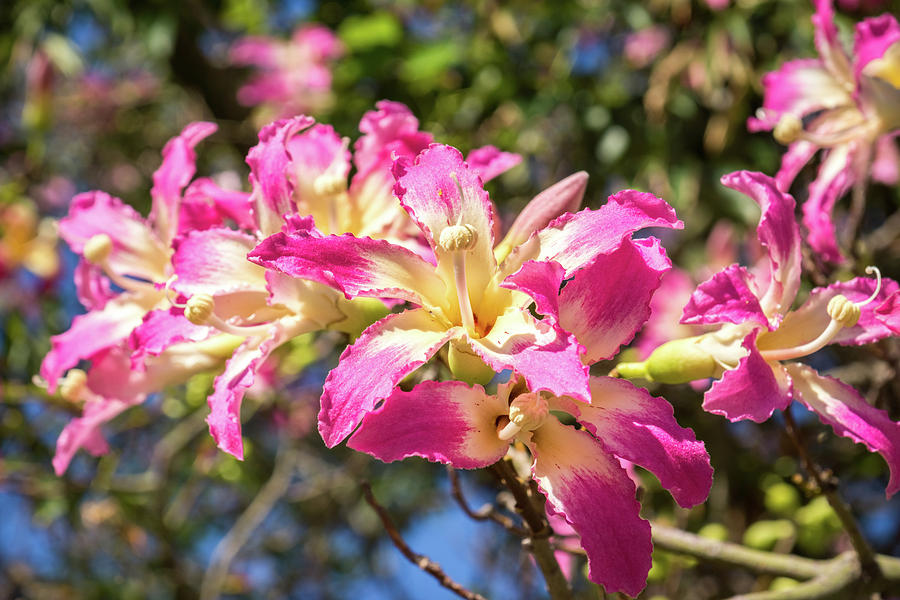
Vivid Exotic Flowers Blooming Silk Floss Tree Ceiba Speciosa Photograph by Mizuleva
Ceiba speciosa, the floss silk tree , is a species of deciduous tree that is native to the tropical and subtropical forests of South America. It has several local common names, such as palo borracho , or árbol del puente, samu'ũ , or paineira . In Bolivia, it is called toborochi, meaning "tree of refuge" or "sheltering tree". In the USA it often is called the silk floss tree.

Silk Floss Tree Flowers, Ceiba Speciosa or Chorisia Speciosa Stock Photo Image of flowers
Description Ceiba speciosa, formerly known as Chorisia speciosa, is a large, semi-deciduous tree with several unique and attractive characteristics. It can grow up to 60 feet (18 m) tall and up to 30 feet (10 m) wide, but the large studded conical prickles on the greenish trunk and branches are most noticeable.
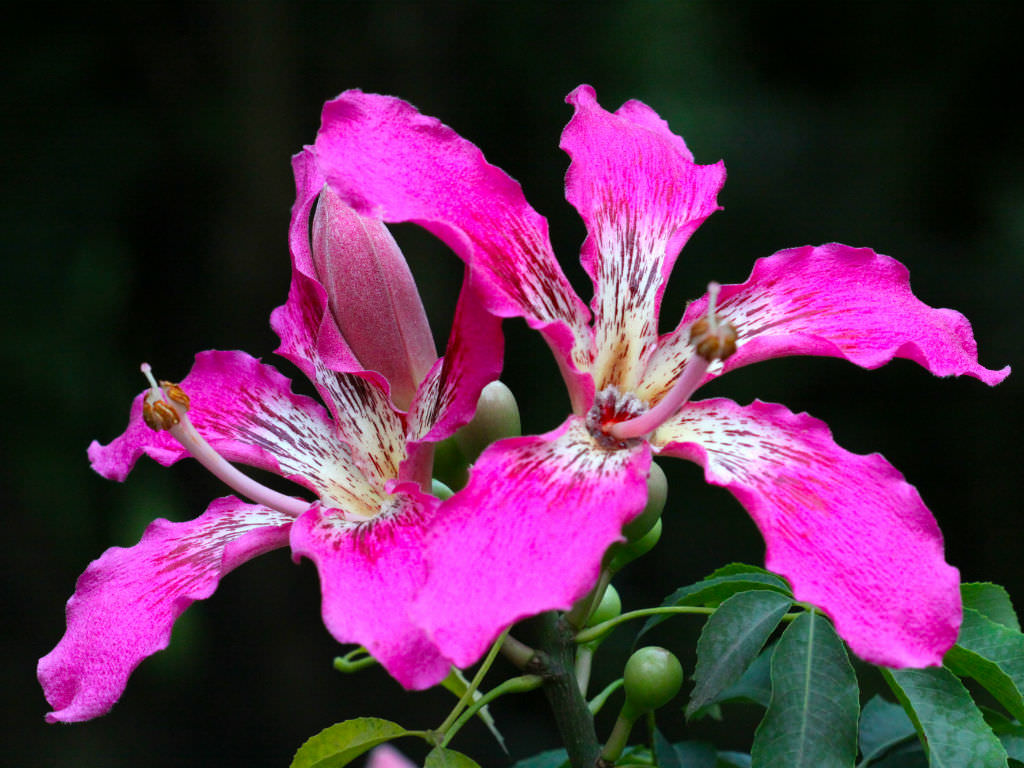
Ceiba speciosa (Silk Floss Tree) World of Succulents
silk floss tree, ( Ceiba speciosa ), thorny flowering tree of the mallow family ( Malvaceae ), native to South America but cultivated as an ornamental in other regions. The seeds yield a vegetable silk used in upholstery. It was formerly called Chorisia speciosa. silk floss tree Flowers of the silk floss tree (Ceiba speciosa).

Silk floss tree, Ceiba speciosa, Malvaceae Unique trees, Deciduous trees, Plant species
Ceiba speciosa and Ceiba chodatii, commonly referred to as the Silk Floss Trees, are flowering trees of the Malvacea family. Theyare native to the subtropical forests of South America. Both the pink- and creamy-yellow-flowering trees are also known as the 'drunken tree'. The common English name of Silk Floss Tree is more readily understood as.
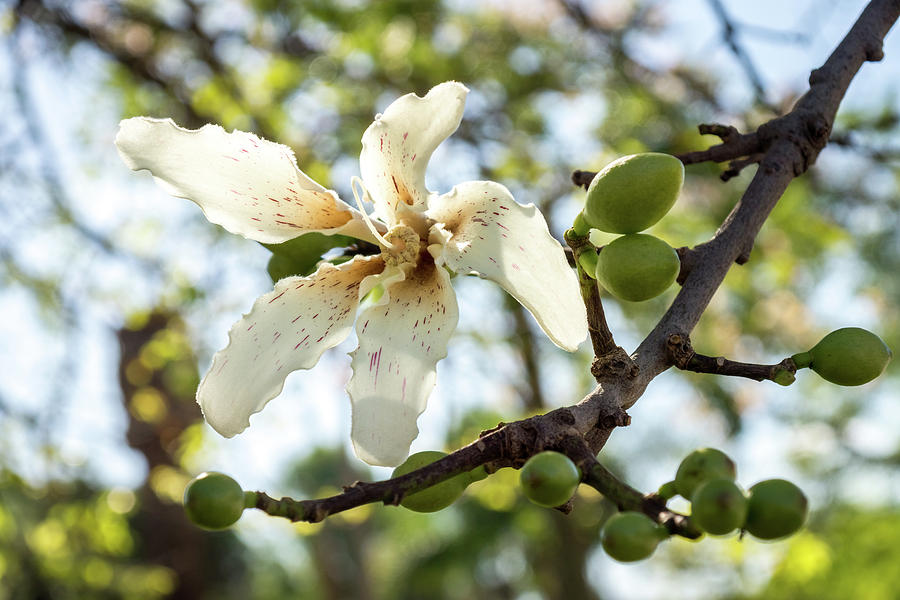
Singular Exotic Bloom Flowering Silk Floss Tree Ceiba Speciosa Photograph by Mizuleva
Ceiba speciosa, commonly known as the silk floss tree or the seibo, is a majestic and tall deciduous tree native to South America. With its towering height reaching up to 80 feet, the Ceiba speciosa is recognized for its impressive size and distinctive appearance.
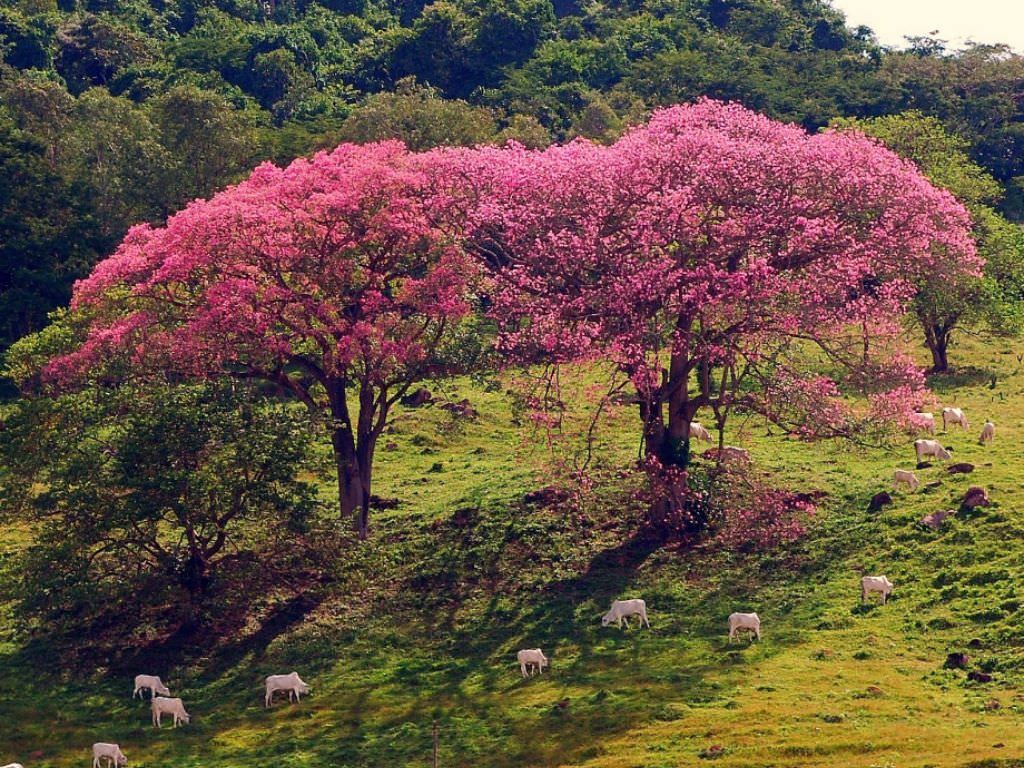
How to Grow and Care for a Silk Floss Tree • World of Succulents
Flowers: Large 6"-9" wide, hibiscus-type flower, pink to magenta with cream to yellow throating, speckled with deep purple to black streaks. Undulate petals. Known to attract insects and hummingbirds. Fruits: Ovoid, 8" long, woody capsules dehisce to expose silky cotton with black beans inside.
Ceiba speciosa (Silk Floss Tree)
The Silk Floss Tree ( Ceiba speciosa ), also known as the kapok tree, is a captivating and distinctive species that hails from South America. Renowned for its ornamental and imposing presence, this deciduous tree can reach heights of up to 80 feet, with a trunk adorned with imposing conical thorns.

Instagram'da Aaron Apsley “Ceiba speciosa (silk floss trees) are in bloom all over the
Classification Common Name: Silk Floss Tree Scientific Name: Ceiba speciosa Family: Malvaceae Distinguishing characteristics Habitat: These trees can reach a potential 25 meters tall with fat and thorny bottle-shaped trunks and branches.

Silk Floss Tree (Ceiba speciosa) flower. South Coast Botanic Garden. Palos Verdes Peninsula (Los
Known almost interchangeably as silk floss tree or floss silk tree, this beauty may also be referred to as Kapok tree and is in the family of Bombacaceae ( Ceiba speciosa - formerly Chorisia speciosa ). The floss silk tree crown is uniform with green limbs branching upon which round palmate leaves form.
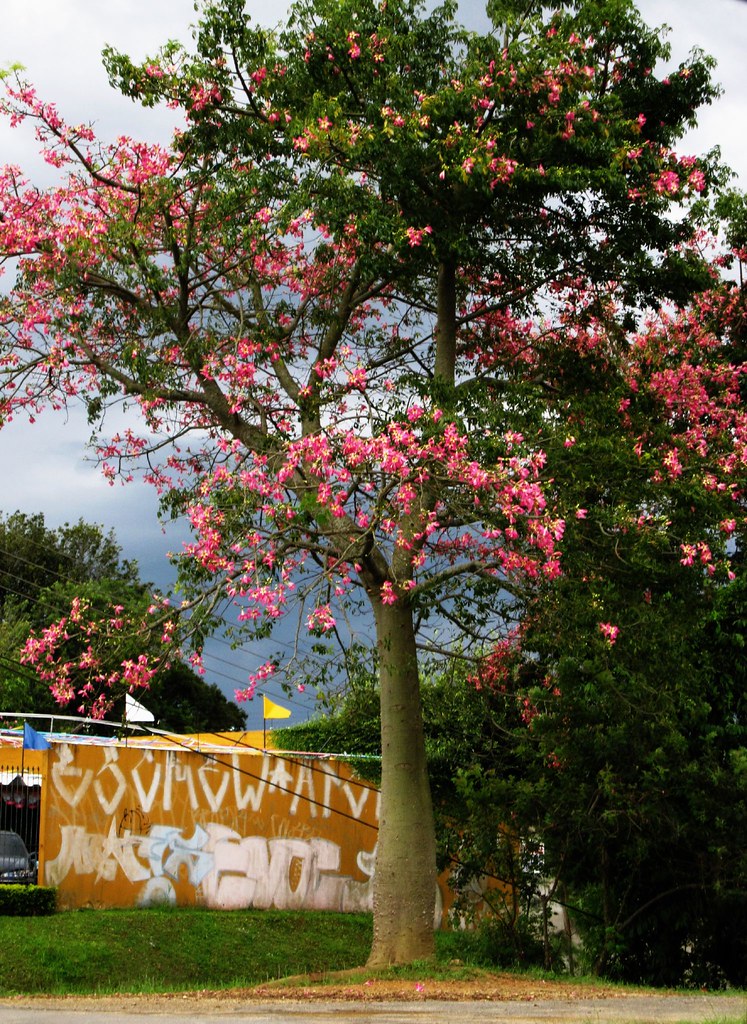
The floss silk tree (Ceiba speciosa) The floss silk tree (… Flickr
The silk floss tree (Ceiba speciosa, formerly Chorisia speciosa), is a species of deciduous tree native to the tropical and subtropical forests of South America. It has a host of local common names, such as palo borracho (in Spanish literally 'drunken stick'), samu'ũ (in Guarani) or paineira (in Brazilian Portuguese). In Bolivia it is called Toborochi, means 'tree of refuge' or 'sheltering tree'.

Ceiba Speciosa or Silk Floss Tree on Alanya Street Turkey. an Exotic Plant with Large Pink
Name derivation: Ceiba - version of South American name; speciosa - beautiful. Related material : Trees of San Diego: Floss-Silk Trees , Steve Brigham, Pacific Horticulture , Oct 2004. About this Entry: The main text of this entry is from the book Trees of Stanford and Environs , by Ronald Bracewell, published 2005.

Ceiba Speciosa, or Silk Floss Tree, a Subtropical Tree with Bott Stock Photo Image of
Native to western South America from Columbia to northern Argentina, white floss-silk tree ( Ceiba insignis, formerly Chorisia insignis) is white-flowered, stouter, and less commonly planted. It grows at a moderate rate to around thirty feet tall and wide (old trees may be somewhat larger), typically with a fat, thorny trunk and spreading branches.
Ceiba speciosa (Silk Floss Tree)
Ceiba speciosa, the floss silk tree (formerly Chorisia speciosa ), is a species of deciduous tree that is native to the tropical and subtropical forests of South America. It has several local common names, such as palo borracho (in Spanish literally "drunken stick"), or árbol del puente, samu'ũ (in Guarani ), or paineira (in Brazilian Portuguese ).

Ceiba speciosa (Silk Floss Tree) World of Succulents
Silk-floss tree can reach 50 feet in height with an equal or greater spread, and grows rapidly the first few years, then more slowly. Some trees maintain a relatively narrow crown with one straight trunk while others are wide-spreading, particularly on older specimens. The large, showy, pink and white, five-petaled flowers, which somewhat.
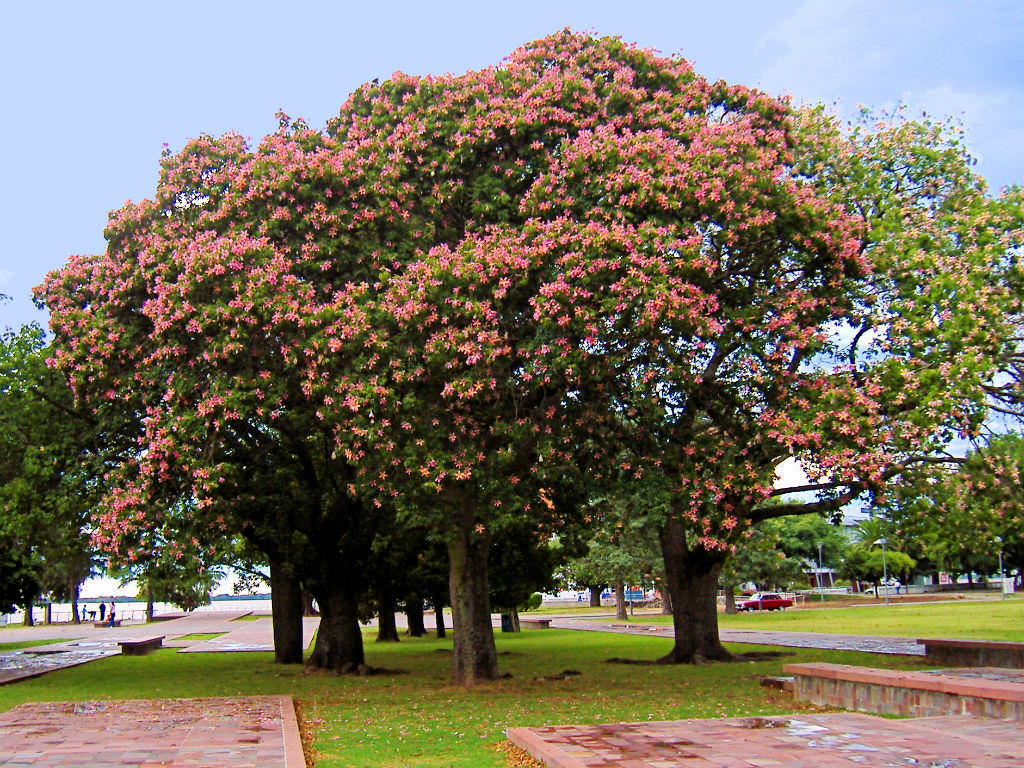
Ceiba speciosa (Silk Floss Tree) World of Succulents
Hi, in today's quick tip we go over how to grow silk floss tree (Ceiba speciosa) and her care needs. Hope you enjoy!DIGGING IN: Let's Grow takes a wholistic.